
Permaculture at Taman Pertanian
Taman Pertanian means Botanical Gardens in Malay; this Taman Pertanian is located in Kuantan, 3.8’ N, on the east coast of peninsular Malaysia in the State of Pahang. This project was initiated by the Royal family of Pahang and Tengku Amir is the young prince who is passionate about permaculture and looking at as a system that can help revive this dying botanical garden.
Garden Description
The Botanical Park is 300 acres run by the local agriculture ministry, and it was setup in 1988 as a tourist attraction in this small port city.
The park is divided into two major sections, a recreational section that has camping facilities, rainforests, big lakes, and halls for weddings and events. The other section is the productive orchards which are divided into tropical fruits monoculture gardens, producing durians, rhambutan, star fruit, mangosteen, duku and breadfruit.
Funds coming from the ministry has been reduced which meant that the park has been struggling to keep the maintenance of the park up to high standard and at the same time the orchards are producing fewer fruits and is losing fertility due to the conventional way of managing them through spraying herbicides, pesticides, and fertilizers.
The Plan
The idea behind incorporating permaculture is to show people a site that integrates permaculture demonstration with recreational activities. This mix will be necessary so that people who want to learn and see permaculture working in the tropics can come to this site as a demonstration site. At the same time the site caters for recreational activities that attract different crowds and traps them! They will be intrigued by what they see of crop gardens, rice paddies and food forests that produce healthy organic produce and making the site better in the process. This demonstration will mean that we get more and more people going through the different variety of courses we are planning on the site that are all related in one way or the other to permaculture as well as the typical permaculture courses such as soil fertility, earthworks, and food production.
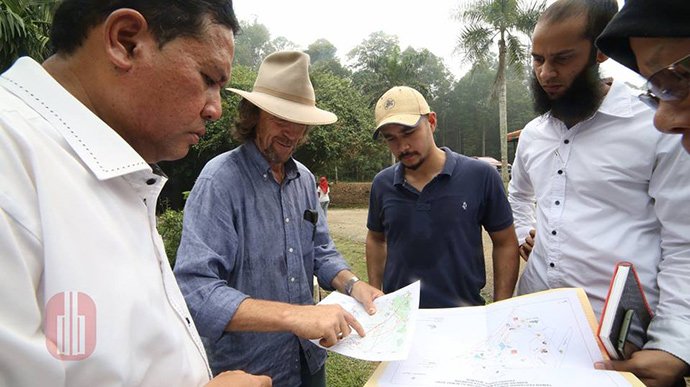
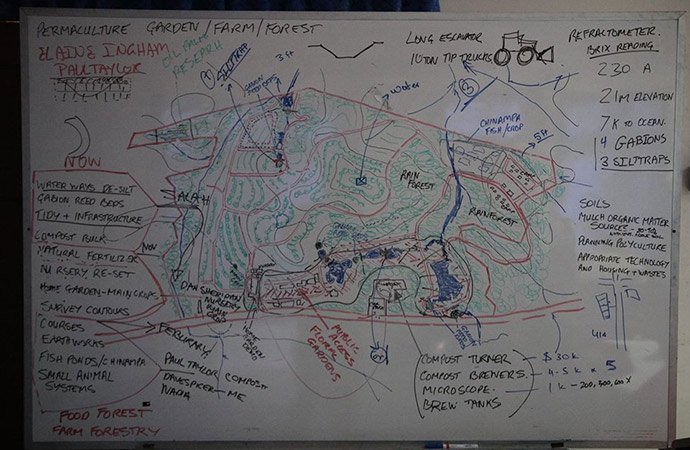
What has been happening
The initial consultation was in October 2015 where Geoff Lawton was invited to the site, and a preliminary assessment and design were done by him. I was encouraged to start immediately since there were funds put in by the water ministry to desilt the ponds on the farm that were clogging up with silt carried from outside the farm. At the time I was about to start teaching a PDC in Salentro in South Italy with my friend Ignazio Schettini. I only had one week before the course started, so I flew directly to Kuantan to initiate the process and then I went back to Italy for the course before flying back to Kuantan to finish the work.
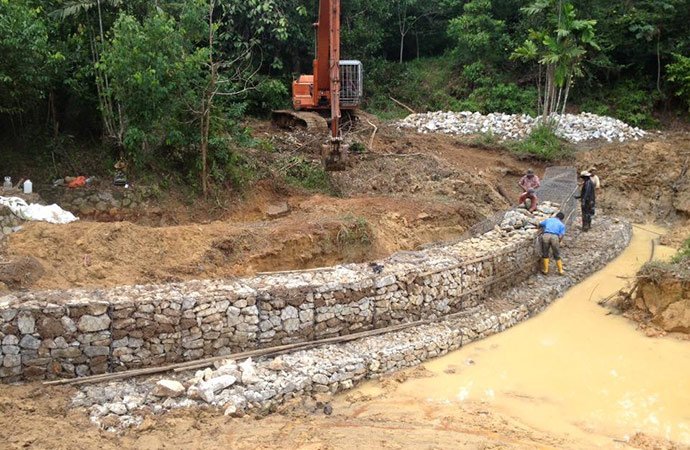
When I came back in mid-October, we worked with the contractor on finishing the desilting of the ponds but at the same time, we built gabions at the inlet of every pond to trap the silt in gravel filled with reeds that will clean the water before entering the ponds. A major cover cropping of all areas affected by the heavy machinery was done, we established three different cover crops that are also leguminous, meaning they will help build fertility where they are growing and can be chopped and taken as input for compost making or mulching anywhere else on the site. At the same time, they are a good feed for the future establishment of animal systems. This was crucial to protect the barren soil from the rainy season that was about to start and to establish a more useful cover than the regular shrubs and grasses that take over and are hard to control.

During my stay, which lasted until early December when the rainy season starts on the east coast, we had Paul Taylor, our compost, and natural fertilizer consultant come and consult on establishing a commercial composting system on the farm. We kickstarted our composting facilities on a small scale and are now producing batches of around two tons a week, made according to the BioVital and the Berkley methods (to understand these points better, read this, this and this).
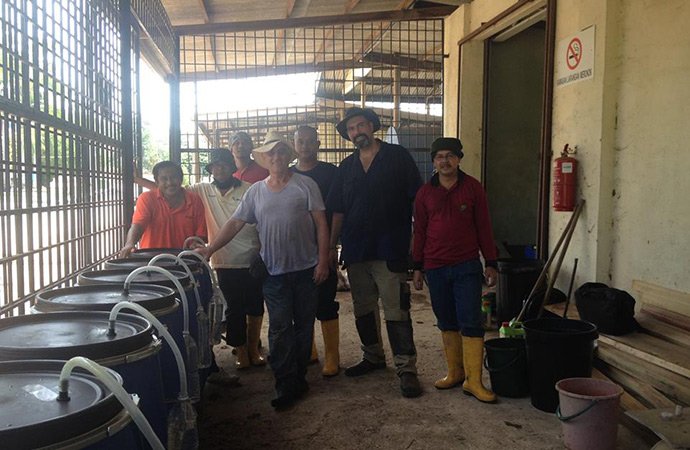
Establishing the compost and the natural fertilizer systems was crucial since all conventional NPK fertilizers were banned from use on the farm and we had to teach the crew on the site about the alternatives they have, including biofertilizers and compost tea.
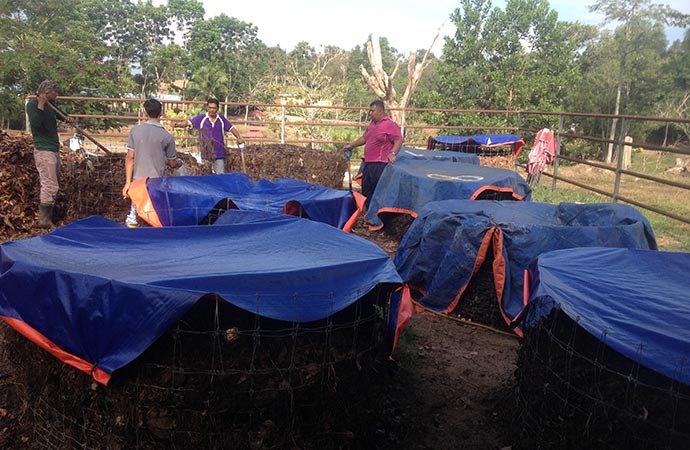
I also started reviving the nursery. I put an emphasis on establishing support species. We needed a good quantity of support species so that we could start diversifying the monoculture orchards and turn them into food forests. The three most important support trees I could easily find seeds and seedlings for were Casuerina, Leuceana and Golden Shower, Cassia Fistula. So, we started establishing them in the nursery along with other lower shrubs and ground covers such as sweet potato and cassava. The nursery already contained a lot of edibles, what they call in Malaysia (Ulam), and there is a plethora of them, which are different herbs and salad greens that are eaten in the Malaysia cuisine on the side of curry and rice.

Since the site has a lot of soil related problems, and with the excessive use of herbicides in the orchards, erosion is a major point to tackle. We have terraces that were eroded since the trees on them were cut down, and that erosion is causing siltation of the ponds on the farm. We started planting vetiver on contour between the terraces to control the erosion. The vetiver’s roots hold the soil, and the ground cover we spread around that also helps in sheltering the soil from the weather conditions and build fertility along the way.
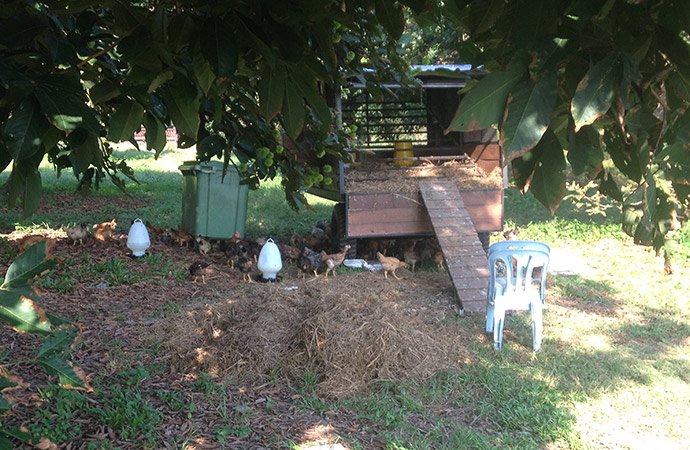
The rainy season starts in November, and that’s when I left the site back to my other plans, in Egypt, London, Palestine, Iran and Jordan (see my previous article – Life After Heaven). In early May I was back, and we had scheduled some interns to start with us on the farm for a three month period. We now have four interns on the site, three Malaysians and one from Hungry. They all have varied backgrounds from architecture to town planning and agriculture graduates; they will be adding a lot of value to what we are trying to establish here and at the same time benefit from experiencing the establishment of a permaculture project at this scale in the tropics.
Murujan Permaculture organized a Permaculture Design Certificate (PDC) course for me to teach on the site. We had 29 students sign up for it, and it was one of the best courses I have ever taught. It showed me how important it was for students attending a PDC to be on a demonstration site. During the course, we could have sessions out in the field to demonstrate what we’ve been talking about in the class, from countering to soaking water underground, to layering food forests and making compost. This experience is what a lot of students are after in a Permaculture Design Course since it’s not easy for them to imagine what we are discussing in the class if we don’t have examples of them on the ground. And that’s why we need to push for the establishment of demonstration sites throughout the world in different climates and different landscapes.
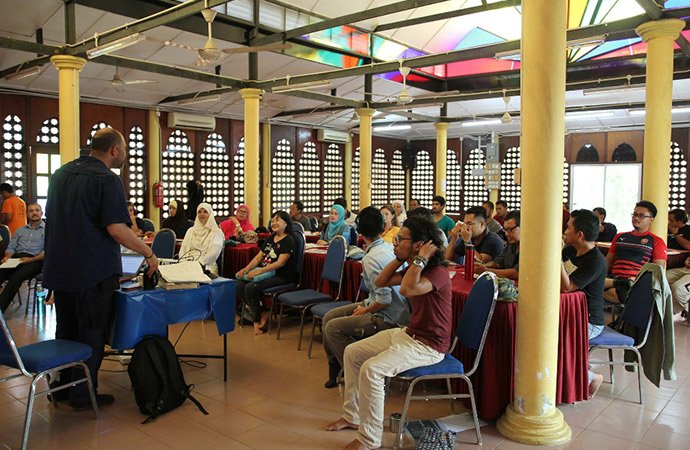
Right after the PDC we had a Compost and Natural Fertilizer course also organized to show students what they can do to build and maintain fertility on their sites. That was an excellent short course for three days where it was mostly hands on experience on different recipes and techniques we use on the farm.
I’m on my way back from a little visit to the north of the country where we visited Captain Zakaria, a retired captain from the army turned organic rice farmer at his place (Sri Lovely Organic Farm and Homestay). He uses the System of Rice Intensification (SRI) process. I had a good time there learning about traditional organic rice farming techniques from rice paddy preparation and fertility maintenance to planting, harvesting, and processing techniques. There are plans to have rice paddies established on the Taman Pertanian site throughout the wetlands that we have which have a continuous flow of gray water that needs to be treated first.
We are now preparing for Geoff Lawton’s next visit to the site. He will be coming in to observe and design more of the earthworks that are going to be needed on the site. We are planning another PDC before the end of the year and also an earthworks course to put in some of these needed earth nano surgery that will enhance the water retention and the fertility of the site.
 We have big plans for this site, and the current work is still in the early stages, but the encouraging thing is that we are finding local expertise and enthusiastic local fresh young blood who are going to be a crucial element to the sustainability of a project at this scale.
We have big plans for this site, and the current work is still in the early stages, but the encouraging thing is that we are finding local expertise and enthusiastic local fresh young blood who are going to be a crucial element to the sustainability of a project at this scale.
I can’t wait to fly back to my favorite demonstration site Zaytuna Farm, in July to teach a PDC with David Spicer. Zaytuna Farm is one of the leading permaculture demonstration sites in the world, and I enjoy teaching there since the site gives the students a full experience of what healthy abundance could look like. To secure a place and to find out more please visit the course listing page here.












